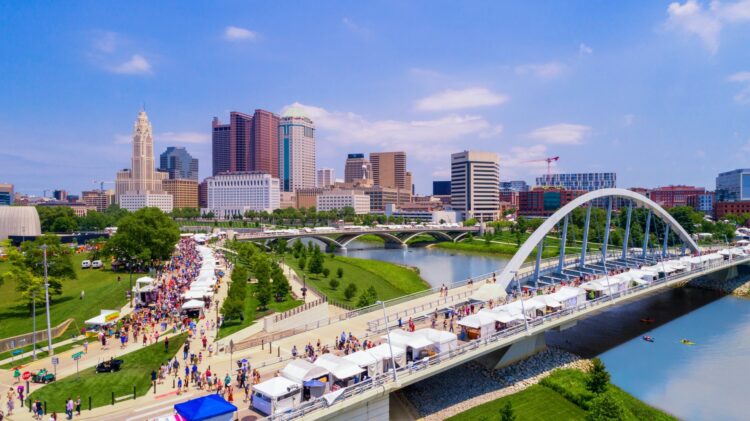



The 2019 Google Earth image from the same angle shows significant changes in 40 years. This much more modern image of Downtown and the riverfront was taken in 1980. The 1919 image shows the intersection of High and Broad Streets, arguably the very center of Columbus.Īside from the 8 on the Square building, virtually everything else from 1919 is long gone. While the Capitol itself a handful of other buildings remain, the density has largely been lost over the years, with parking lots where many once stood. Columbus, Ohio has a humid continental (Köppen climate classification Dfa) climate, characterized by humid, hot summers and cold winters, with no dry season.The Dfa climate has average temperatures above 22 ☌ (72 ☏) during the warmest months, with at least four months averaging above 10 ☌ (50 ☏), and below 0 ☌ (32 ☏) during the coldest. In the 2019 image, skyscrapers have now replaced many of the older buildings. Venturing to Columbus between December and February might be less appealing due to lower temperatures, which average from 21.6F to 37.6F. The city was compact, dense and dominated by brick buildings. Note that the term 'measurable' denotes snowfall that is equal to or greater than a tenth of an inch. Based on observations through 2020, 1998 was the hottest year on record, with an annual. Continuous records of snowfall data in autumn go back to 1893 for Cincinnati, 1885 for Columbus, and 1910 for Dayton. Since the 1970s, annual average temperature has risen more than 2F. This photo predates all highrise construction. Here is a look at some climatological information for the earliest snowfalls on record at Cincinnati, Columbus, and Dayton. This photo of Capitol Square in 1919 is one of the earliest aerials of Downtown I was able to find. In the after photo, nearly all the vacant land is gone except for park space, Greenlawn Cemetery and areas along the rivers.


 0 kommentar(er)
0 kommentar(er)
